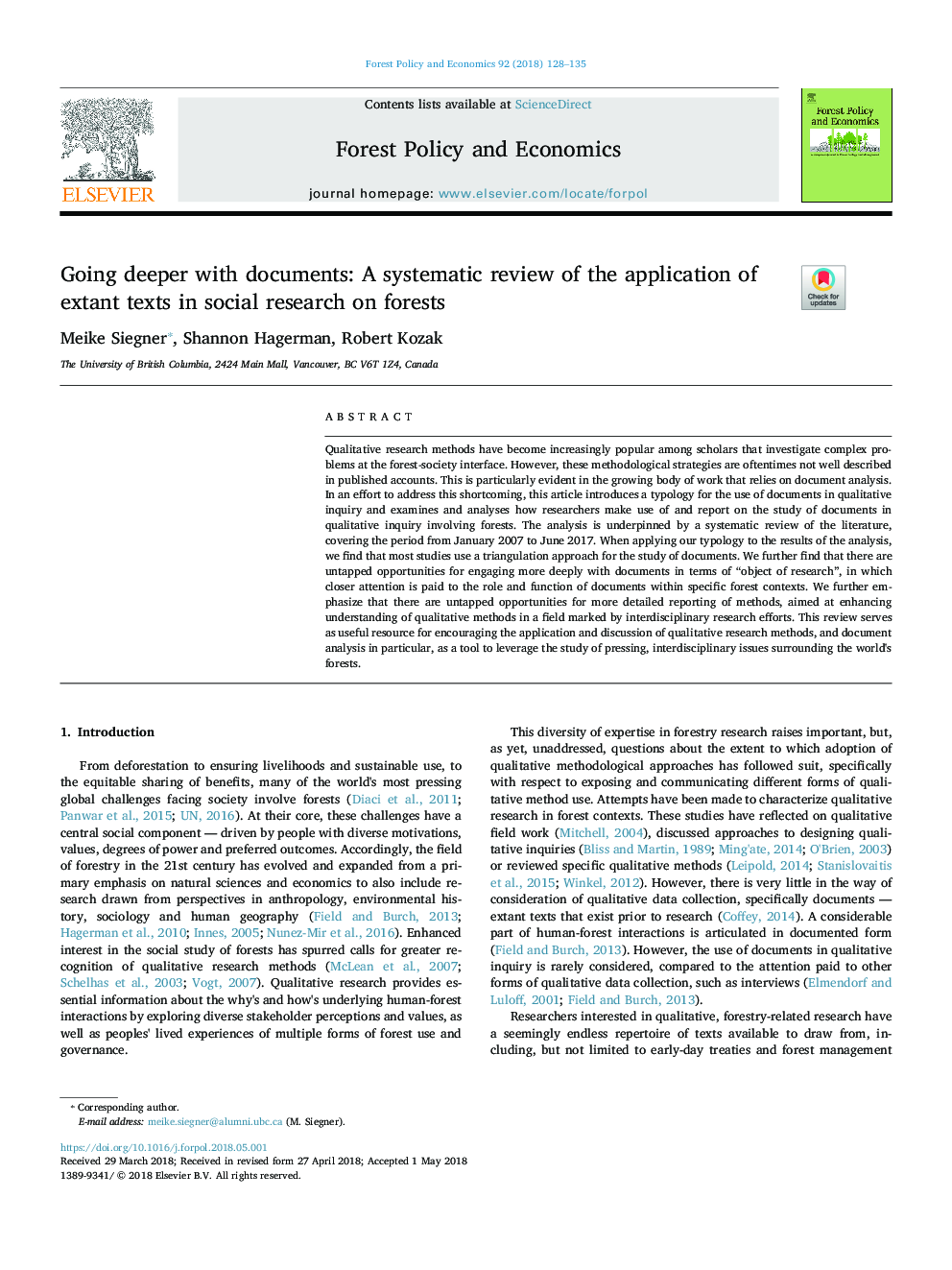| Article ID | Journal | Published Year | Pages | File Type |
|---|---|---|---|---|
| 6544731 | Forest Policy and Economics | 2018 | 8 Pages |
Abstract
Qualitative research methods have become increasingly popular among scholars that investigate complex problems at the forest-society interface. However, these methodological strategies are oftentimes not well described in published accounts. This is particularly evident in the growing body of work that relies on document analysis. In an effort to address this shortcoming, this article introduces a typology for the use of documents in qualitative inquiry and examines and analyses how researchers make use of and report on the study of documents in qualitative inquiry involving forests. The analysis is underpinned by a systematic review of the literature, covering the period from January 2007 to June 2017. When applying our typology to the results of the analysis, we find that most studies use a triangulation approach for the study of documents. We further find that there are untapped opportunities for engaging more deeply with documents in terms of “object of research”, in which closer attention is paid to the role and function of documents within specific forest contexts. We further emphasize that there are untapped opportunities for more detailed reporting of methods, aimed at enhancing understanding of qualitative methods in a field marked by interdisciplinary research efforts. This review serves as useful resource for encouraging the application and discussion of qualitative research methods, and document analysis in particular, as a tool to leverage the study of pressing, interdisciplinary issues surrounding the world's forests.
Related Topics
Life Sciences
Agricultural and Biological Sciences
Forestry
Authors
Meike Siegner, Shannon Hagerman, Robert Kozak,
